Projects for Soil-structure interaction
Ruidong LI
Research topic: Cone Penetration Tests in Unsaturated Soil
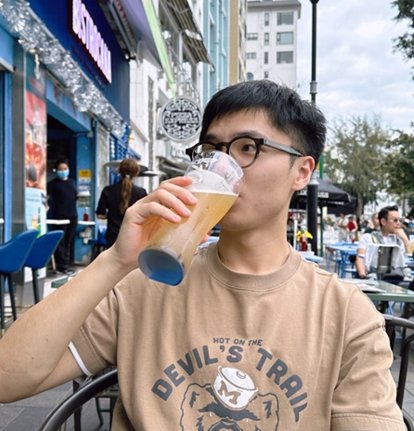
Cone penetration testing (CPT) is a common site investigation method used to determine soil profiles and characterize in-situ soil properties. However, most of the existing interpretations of CPT data are established for dry or saturated soil. In recent years, studies have shown that ignoring the matric suction effect in unsaturated conditions during data interpretation could lead to biased soil characterization and soil property estimates. Still, due to the lack of fundamental understanding of the mechanics during cone penetration in unsaturated soils, accounting for the matric suction effect on the CPT data-soil properties/characterization is not clearly defined, and more laboratory testing in controlled environments is required to fill this gap in knowledge. High-g CPTs ensure the simulation of the entire penetration process is within a stress regime that is much more representative of field conditions than 1- g laboratory testing. In my research, a series of CPTs will be performed in unsaturated coarse-grained or fine-grained soils in centrifuge environment to study and quantify the effect of matric suction to the CPT response.
Pengyu ZHU
Research topic: Effects of two-layered sand and clay strata on twin tunnel interaction
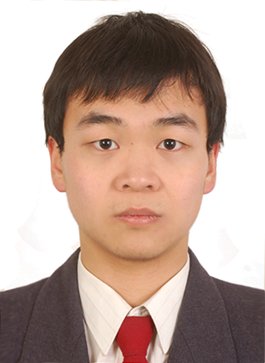
I am a PhD student admitted at HKUST in 2022. My research focuses on studying twin tunnel interaction using centrifuge testing. The development of modern cities necessitates numerous tunnel constructions within confined underground spaces. New tunneling can induce stress redistribution and displacement in the ground, triggering adverse settlements and structural responses on the adjacent existing tunnel. Studies on twin tunnel interaction have primarily been based on the assumpti on of uniform soil. Whereas the knowledge of the effects of layered soil strata on twin tunneling is still limited. Three-dimensional centrifuge tests are conducted to study twin tunnel interaction in two-layered sand and clay strata. Tunnel advancement can be simulated three-dimensionally in-flight using a novel device called a "donut". Hopefully, the findings can provide new insights into twin tunnel interaction and offer conservative guidance for engineering practice.
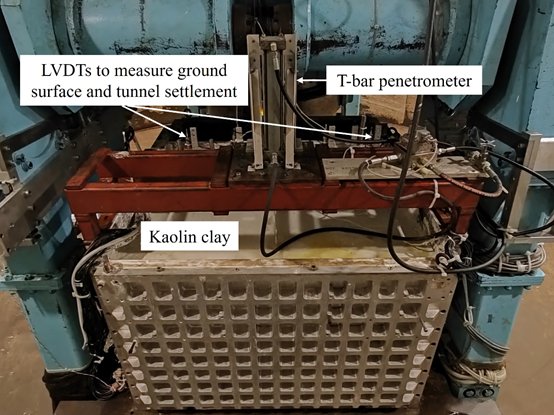
Yi LE
Research topic: Centrifuge modelling of the fatigue behaviour of an SCR in the touchdown zone under combined three-dimensional motions
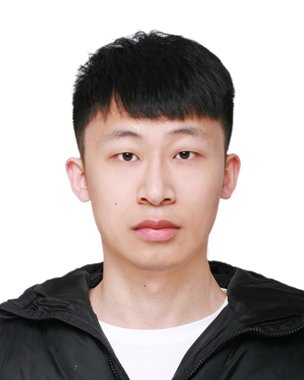
I am a PhD student admitted at HKUST in 2021 and am studying Steel catenary riser (SCR)-seabed interaction using centrifuge. SCRs provide a cost-effective solution for deepwater oil and gas production. However, SCRs are susceptible to potential fatigue failure due to the cyclic motions of floating platforms. Previous studies on the physical modelling of cyclic SCR–seabed interactions have primarily focused on either the continuous cyclic motion of an SCR or a single rest period between two SCR motion packets. However, our understanding of the development of seabed trenches and excess pore pressure and their effects on SCR fatigue during multiple episodes of three-dimensional SCR motion and soil reconsolidation remains limited. To address this knowledge gap, a model container is newly developed which is capable of modelling 3D SCR motion including heave, surge, sway, and vortex-induced vibration (VIV) in a geotechnical centrifuge.
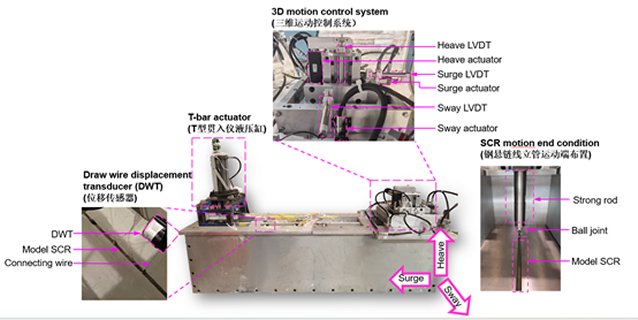
Shuai ZHANG
Research topic: Centrifuge modelling of deep cement mixing columns supporting loose unreinforced hydraulic sand
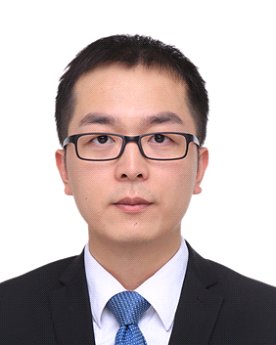
I am a post-doctoral fellow working on the centrifuge and numerical investigation of deep cement mixing (DCM) method in land reclamation works. Land reclamation has witnessed a recent trend involving the use of hydraulic fill on DCM columns. However, the load transfer mechanism between the unreinforced loose earth-platform, semi-rigid columns, and the consolidating soft ground remains incomplete. Existing design approaches are often oversimplified with substantial uncertainties. A series of centrifuge tests have been carried out to investigate the response of DCM improved marine deposit after reclamation backfilling. The in-flight filling procedure was performed using a sand pluviation device controlled by a hydraulic actuator, which opens a trapdoor and allows the overlying sand to fall by gravity. This research provides new insights into the fundamental understanding of the interaction among unreinforced loose earth-platform, semi-rigid columns, and the consolidating soft ground, as well as design recommendations for managing long-term residual settlements and determining the load capacity of DCM columns.
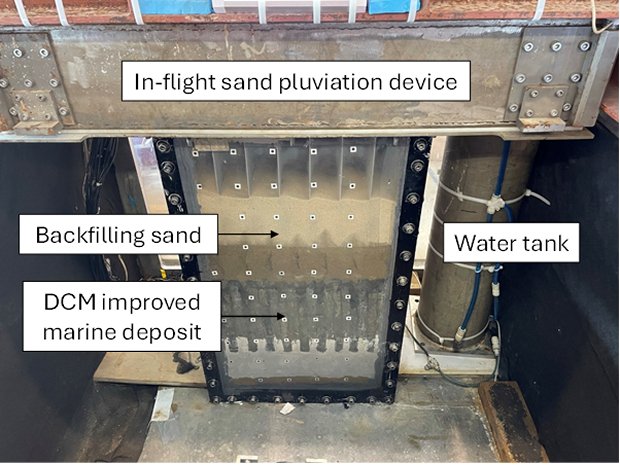
Yuntian ZHAO
Research topic: Centrifuge Modeling of Cemented Stone Column-Seawall System for Land Reclamation

I am a PhD student who enrolled in Professor Gang WANG's research group at HKUST in 2019. My study researches on a cemented stone column-sea wall system for land reclamation. The strengthening/failure mechanism of cemented stone columns on marine clay and the pile-soil interaction were investigated in the centrifuge test. In addition, by changing parameters such as pile diameter and replacement ratio, multiple sets of centrifuge model tests were designed to explore the parameters that affect the stability of the structure. Through this, the structure was optimized to verify the practical feasibility of the cemented stone column-seawall system in land reclamation.
Demonstration: [here]
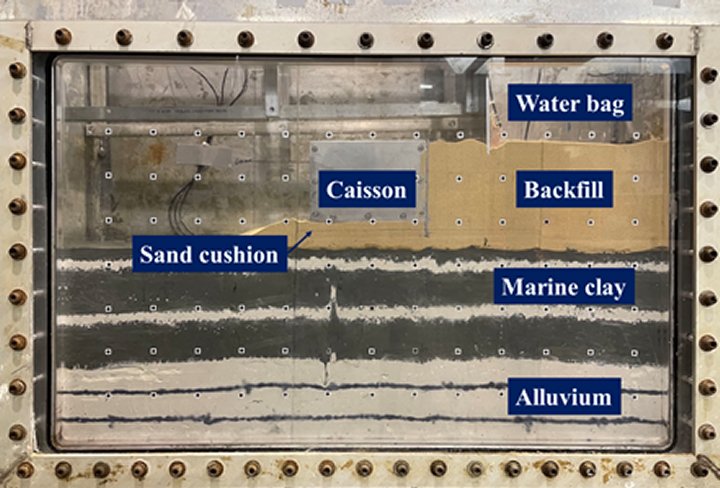
Dr Muhammad SHAKEEL
Research topic: Effects of a multi-propped excavation on adjacent floating pile foundations
I am a post-doctoral fellow, after I pursued my PhD in the HKUST in 2020. Underground space has become increasingly important in relieving the shortage of land and meets the transportation requirements in big cities with the rapid economic development and dramatic increases of population. Deep excavations for underground facilities are usually conducted near existing buildings. It is a major concern for designers to estimate potential damages of existing piles resulting from nearby deep excavations. In my research, a series of three-dimensional centrifuge tests are being carried out to investigate the influence of a multi-propped deep excavation on adjacent axially loaded pile foundations in sand and clay. In-flight multi props installation will be simulated using hydraulic actuator which are controlled by pneumatic valve. This research will provide new insight into the fundamental understanding of the soil-pile-excavation interaction mechanism. It is intended to develop calculation techniques and design charts to improve our current design guidelines, which will have significant beneficial impacts on the safety, the environment and the economy worldwide.
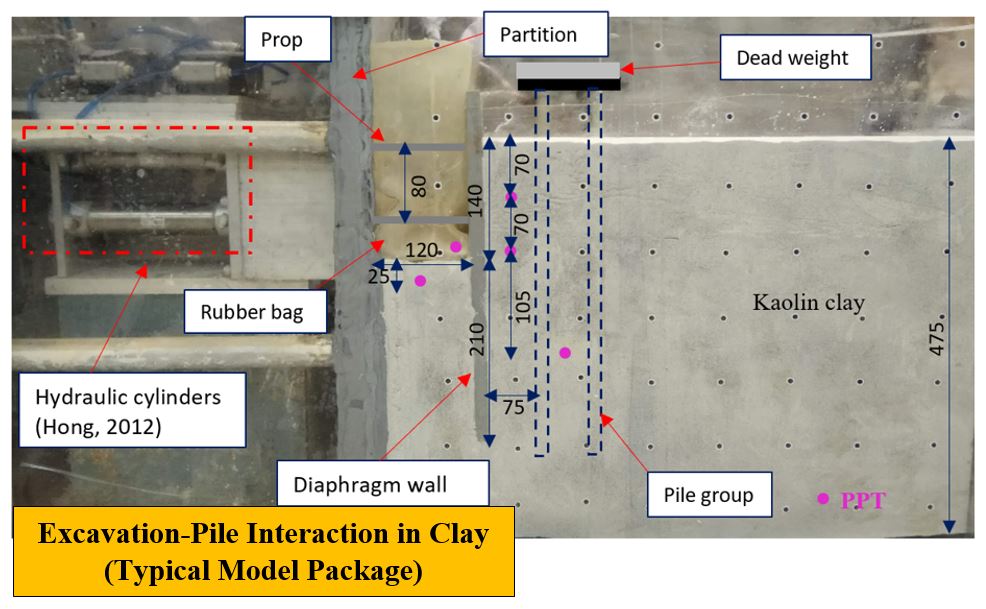
Annie WONG
Research topic: Effects of skew angle on crossing tunnels
I am a PhD student admitted at HKUST in 2017 and am studying tunnelling behaviour using the centrifuge. With urban development and population growth, new tunnels are now constructed in proximity to existing tunnels. With different skew angles, an existing tunnel is subject to stress changes and deformation, which can lead to serviceability problems. Previous studies on multi-tunnel interaction mainly focus on parallel and perpendicular tunnels. The impact on a new tunnel constructed with other skew angle is not well understood. To investigate the complex interaction, three-dimensional centrifuge modelling of multiple tunnels is conducted. Tunnel excavation is simulated three-dimensionally in-flight using a novel device called the “Donut”. The measured results can be back-analysed using the finite element method to enhance understanding of the interaction of multiple crossing tunnels.
